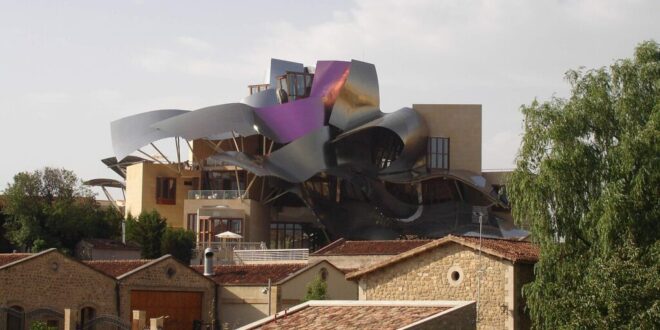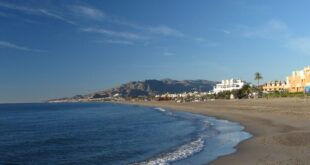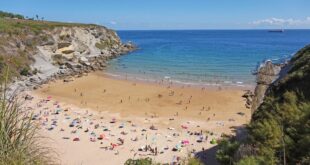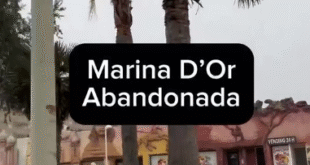You’ve all seen the ‘scary’ headlines: “Tourists go home.”
We’ve heard “Barcelona, it’s not a themepark” and have seen tourists being sprayed by water guns on Mallorca. Spain’s relationship with tourism is a complicated one.
The tourism industry accounts for about 12 percent of Spain’s economy, but there are some big players who have resisted due to the overcrowding of tourists and locals who cannot afford to stay in their childhood homes.
There’s another Spain that welcomes you. Where the crowds… wait, what crowds?!
Here’s a quick tour of six locations where tourists are welcomed and locals enjoy having visitors around.
La Rioja is the place where wine comes first
Credit: Creative Commons
La Rioja in northern Spain deserves to be given more attention. It is home to over 500 wineries, jaw-dropping landscapes, and hilltop towns like Haro and Logroño.
La Rioja will receive less than a million tourists in 2024. It’s not even a whisper when compared with the 15,000,000 visitors who have poured into Barcelona.
You can visit vineyards that are cutting-edge, such as Marques de Riscal. Or you can get soaked by the Batalla del Vino. Or, hike along trails that are also alternative routes to the Camino de Santiago. It’s slow tourism at it’s best.
Extremadura was the location where Game of Thrones filmed
Extremadura borders Portugal and is a place rich in history, views and culture, but no one wants to sell a fridge magnet. Locals claim that it is one of the least valued regions in Spain.
Highlights include the Roman ruins of Merida and Caceres, as well as the Game of Thrones backgrounds in Trujillo and Caceres, and the hilltop monasteries of Guadalupe.
You’ll also see vultures circling Monfragüe National Park and Michelin-starred menus in rural mansions. The ham here is said to be so delicious that you will wonder why it took you so long to come.
El Hierro, Canary Islands Without Crowds

Credit: Creative Commons
Tenerife might be Spain’s party island, but El Hierro has a more reserved feel.
It’s a volcanic isle that runs on renewable energy, sometimes for weeks. The islanders live with the motto “Tourism yes, but at no cost.”
So you won’t get an all-inclusive buffet, and you definitely won’t pay €10 for a beer, but you’ll enjoy some spectacular cliffs and diving spots that rival the Red Sea. You’ll also find sleepy villages that attract fewer than 5, 000 tourists per year.
It is worth seeing that Teruel still exists.

Credit: Creative Commons
People used to wonder if Teruel existed for a while (kind of like Bielefeld is Germany, right?). The people embraced it and created a movement, Teruel Existe. It does.
What can you expect? Mudejar buildings, medieval fortresses and fossil museums.
You can walk all day without seeing more than two people. The locals still treat tourists as guests and not as invaders. Locals can tell you stories about dinosaurs, truffles or even how the town was once dressed in medieval garb for fun. No selfies, no stress, just real-deal Spain.
Jaen is the land of olive trees

Credit: Creative Commons
Have you heard of Jaen before? You’re in luck, because most people don’t know about Jaen.
It’s the capital of olive oil in the world, with over 60,000,000 olive trees. But there’s more: Renaissance towns like Úbeda and Baeza, hilltop castles, and Andalusian energy that feels untouched by the Instagram crowd.
Jaen’s prices are very low. You can get a table in a restaurant for half the price of Seville.
Soria is where Spain slows its pace

Credit: Creative Commons
Soria is the last but not least in Castilla y Leon. Slow travel might be its ultimate goal. The rolling wheat fields, the medieval hermitages and the forests that inspired Spanish poetry.
What’s the catch? Pure tranquility, just like a fresh-air treatment. You can go here if you want to take your time.
If Spain had an option to “reset”, this would be it.
What is the idea? Spain has room for tourists and still has plenty of space
Some Spanish cities are drowning (really, it’s understandable!) in tourists. Some Spanish cities are (understandably) getting tired of holidaymakers.
Others are still waiting on you. They don’t wish to become the next Barcelona or Mallorca. Instead, they prefer to remain open and authentic (and perhaps even underrated).
Maybe it’s now time to welcome a new Spain where the pace is slower and tourists still feel welcomed.
More articles on life in Spain.
 Costa News Spain Breaking News | English News in Spain.
Costa News Spain Breaking News | English News in Spain.





